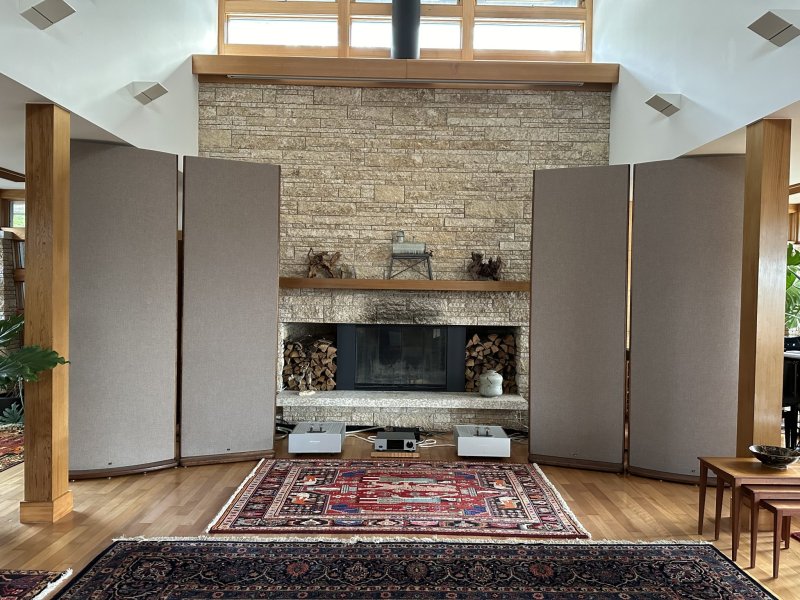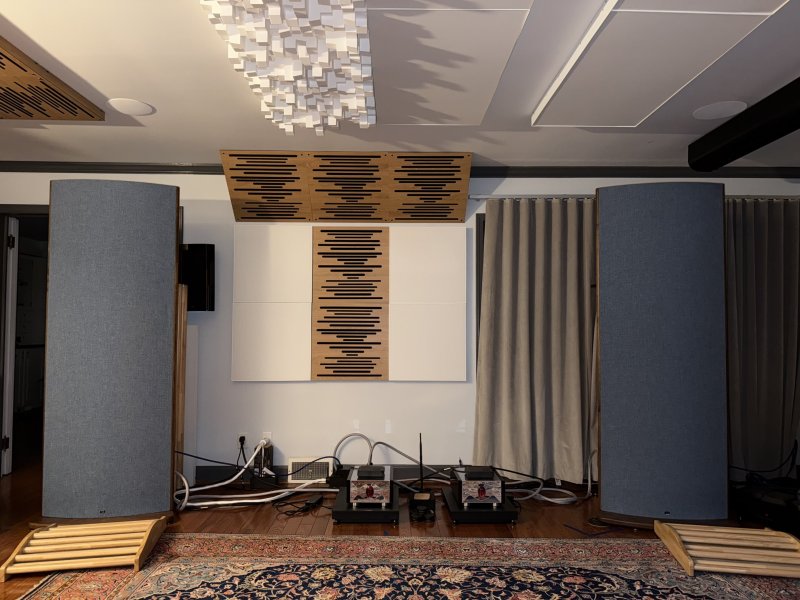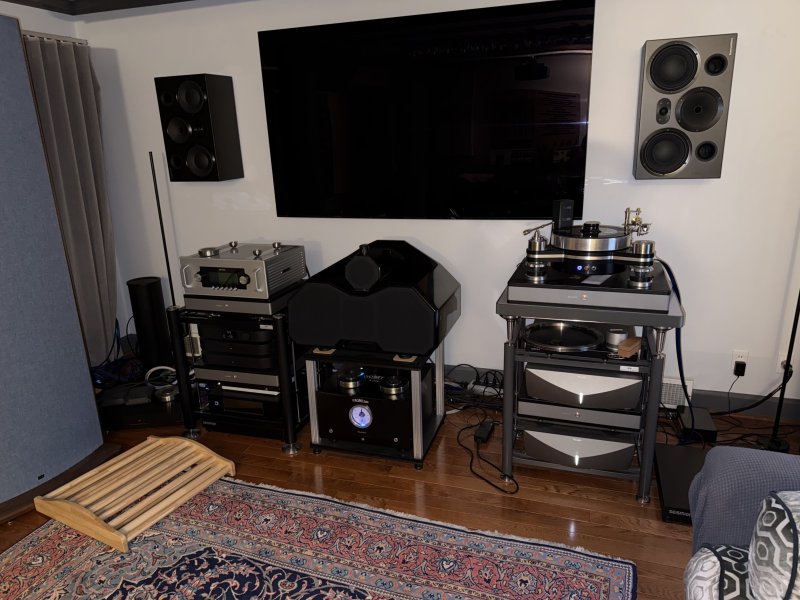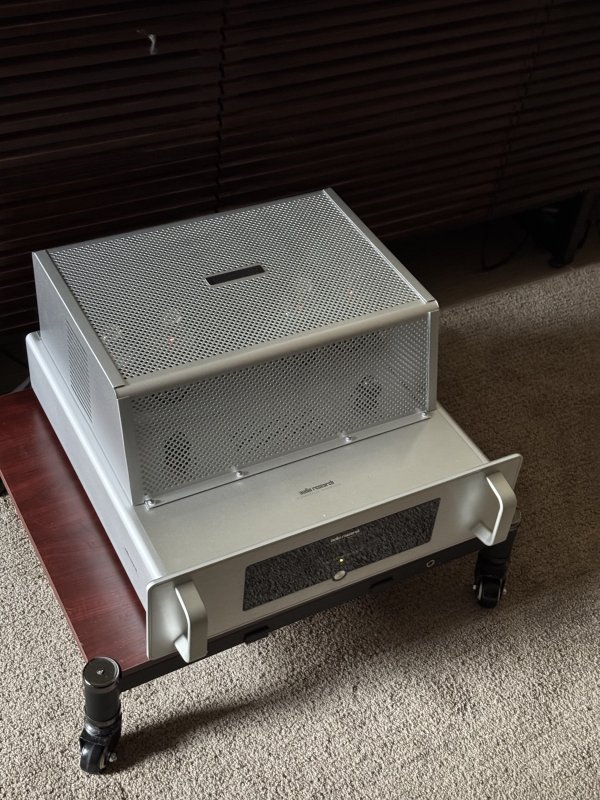WBF readers might know my current obsession with Soundlab speakers, in particular the large 9-foot G9-7c model has become my reference loudspeaker. It’s usually paired in cooler weather with a pair of monster ARC 750SE’s, which are GOT fire-breathing dragons that use 18 KT150 tubes per channel. In summer months, this monster is not a viable solution and has been retired to its cave, so I was looking for a cooler solution. After much deliberation I got an ARC VT80SE, not expecting to like it much as it has1/10th the power. But to my surprise this is a really terrific amplifier that drives my SL’s extremely well. It has all the richness I want from a tube amplifier and while it doesn’t have the dynamics of the 750SE, it’s not too shabby in that department. Best news is that it allows tube rolling since it uses ARC’s auto-biasing circuitry. A huge drawback to the 750SE is that it ONLY works with ARC branded KT150s, an expensive lesson I learned the hard way.
So, after checking with ARC, I tried the VT80SE with KT170 tubes, and I like them a lot. A bit more power and quite a bit more refined in their sound. Amplifier sound is very dependent on the loudspeaker. My SL has an impedance of 30 ohms in the bass. A modern Wilson has a bass impedance of 2 ohms! The two loudspeakers are like cheese and chalk: entirely different. So, caveat emptor if you use a different loudspeaker.
The KT170s are still breaking in, but after a week or so of listening, I’m impressed. The VT80SE is still in ARC’s lineup. Another reason I like it: its simple and elegant design. I don’t want “ghost” meters or blue meters or flashing lights, thank you you very much. My 750SE’s have analog meters. By turning the amplifiers sideways, I ignore them. The VT80SE thankfully has none of this nonsense. It is auto biasing, so no need to have a dancing meter. Highly recommended for those looking for a slice of ARC magic at a relatively lower price. It’s art without artifice. An ARC classic.
‘
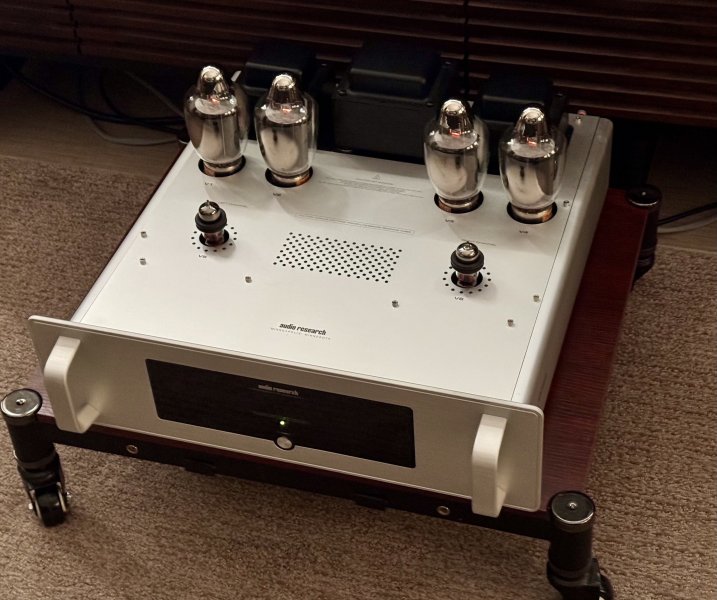
So, after checking with ARC, I tried the VT80SE with KT170 tubes, and I like them a lot. A bit more power and quite a bit more refined in their sound. Amplifier sound is very dependent on the loudspeaker. My SL has an impedance of 30 ohms in the bass. A modern Wilson has a bass impedance of 2 ohms! The two loudspeakers are like cheese and chalk: entirely different. So, caveat emptor if you use a different loudspeaker.
The KT170s are still breaking in, but after a week or so of listening, I’m impressed. The VT80SE is still in ARC’s lineup. Another reason I like it: its simple and elegant design. I don’t want “ghost” meters or blue meters or flashing lights, thank you you very much. My 750SE’s have analog meters. By turning the amplifiers sideways, I ignore them. The VT80SE thankfully has none of this nonsense. It is auto biasing, so no need to have a dancing meter. Highly recommended for those looking for a slice of ARC magic at a relatively lower price. It’s art without artifice. An ARC classic.
‘


















